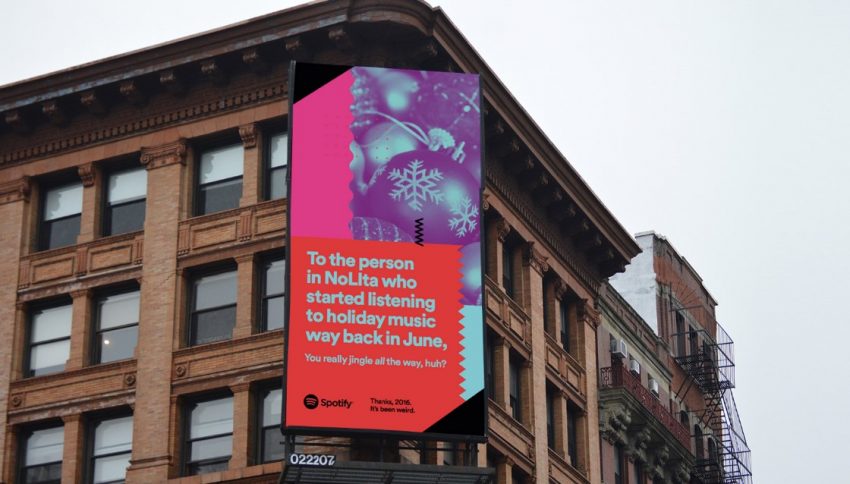The phrase story time conjures up a certain image when in the context of bedtime or Dr. Seuss. But toss in a few suits, deadlines, and ROI, it suddenly becomes an abstruse concept. It doesn’t have to be though, and it’s more than a dreadfully overused marketing buzzword that’s been tossed around the last few years. Despite coming up in every content and marketing circle at one point or another, many people aren’t exactly sure what it is, let alone how to do it well. Storytelling is much more than just longform content or hitting an arbitrary word count. Storytelling is about taking people on a journey, quick or not, and connecting with them enough to make an impression—ideally, one that elicits a desired reaction. Maybe that involves someone funding a project, or it can be as simple as getting someone to sign up for your charity e-newsletter. No matter what your goal is, it’s important to remember that good storytelling grabs an audience’s attention—and keeps it. According to One Spot, 92% of consumers want brands to make ads that feel like a story.
Providing useful content that is emotionally engaging and motivates customers, as well as internal staff, helps tell your customers what your brand stands for. It’s customer centric. It goes beyond merely providing information. And when done right, it’s a connection that’s beneficial for brands and their customers.
Not something to solely rely on, but a tool amongst many, storytelling is a technique to artfully incorporate into your myriad of outreach tactics, from traditional advertising to native ads to advertising on YouTube. But when it comes to inbound marketing, storytelling is without a doubt your key player, if not the homerun hitter.
Seven Ingredients to a Good Story
Applying the K.I.S.S. method (keep it simple stupid), a story consists of a clear beginning, middle, and end. Sound familiar from grade school? Granted, today in our professional careers, the stakes are much higher when it comes to being able to tell a good story. However, the construct is basically the same. There are some best practices to keep in mind when developing that all-important story. A colleague of mine, Park Howell, brand story strategist and founder of The Business of Story, lays it out as there being seven habits to highly effective storytelling for marketers.
- Place your audience at the center of the story
- Think in terms of scenes
- Capture a particular moment
- Use powerful characters
- Establish compelling stakes
- Create uncertain outcomes
- Make a point
As a creative marketer working and heading up different teams throughout two decades, I’ve seen a greater desire for people to have a bigger connection and reason for buying the things they do. Frequently, they want there to be meaning for what they choose to support. It doesn’t matter if it’s a bottle of Pinot Noir or a mountain bike, people have a strong need and desire to feel associated with their brands of choice. Customers want to know what a brand stands for, what its philosophy is, and how that brand treats its employees. Of course, no customer is going to consciously go through the effort of a Q&A session with the brands and companies they associate with—and they don’t feel the onus to do so. Instead, they leave that responsibility to brands. The more compelling and better the feeling of a brand’s story, the more likely it is to engage and influence a customer and, in turn, support it with their discretionary dollars.
That’s where storytelling comes into play. Although smarter brands are realizing the importance of the story they must tell, a surprising 75% of marketing leaders fail to understand or participate in this swing of consumer behavior according to Adobe and Goldsmiths.
Successful Storytelling
The type of medium to tell your story isn’t as important as the story, or narrative, itself. As marketers, we should be agnostic when it comes to tactics and let whom we’re speaking to, and how they best respond to a given tactic, be the compass for our chosen media direction.
Knowing your brand’s story must be told is the first step. Being able to understand the different ways to do so is an important next step. As marketers, we should be conscious of the manners in which our brand story is told. Since 92% of people say they trust peer advocacy over traditional advertising, why not have those peers do your brand storytelling with customer-led storytelling?
That’s exactly what Airbnb did with a campaign called Stories from the Airbnb Community. It highlights real Airbnb hosts who tell their personal stories and how Airbnb helps them, ranging from being able to pay medical bills to helping pay for their own family’s vacations.

Storytelling can also be as critically dire as Chipotle’s efforts after repeated headlines broke of E. coli in their food. They took great efforts to tell their story of establishing themselves as an industry leader in food safety and seeking to cultivate a better world with respect for animals, farmers, and the environment.
Another approach to storytelling can be as simple and quick as Spotify’s notable 2016 campaign. They did a beautiful job combining creative advertising with listener data to deliver what I consider an unexpected version of storytelling by highlighting stories of their fans to illustrate how Spotify plays a role in their everyday lives.

How It Helps Your Own Story
Recently, World Economic Forum, with analysis from LinkedIn, released the 10 most in-demand skills of 2019. In it, they listed the top five soft skills that companies found most needed, ranked as follows:
- Creativity
- Persuasion
- Collaboration
- Adaptability
- Time Management
Good storytelling can grow your business as well as your own personal equity within your company. Knowing these top five soft skills are so beneficial to being desired in the workforce, it makes sense that storytelling is a great way to hone them. Why? Because, storytelling is a fantastic way to show off these skills.
Here’s How
Creativity
If nothing else, storytelling is creative in and of itself. The goal of it is to obviously connect with your reader or listener. Finding a creative way to do so is imperative.
Persuasion
Another frequent goal of storytelling is to persuade your audience of your differentiation. There’s a point to be made, and it’s likely that you’ll need to persuade some people in the process in order to have them come to the same conclusion.
Collaboration
A smart storyteller will interact and collaborate with other colleagues to formulate their story. Also, it’s often a two-way engagement with customers that becomes mutually beneficial. Yes, as with most things, collaboration is key.
Adaptation
A great storyteller can read the room or situation and adapt their story so they don’t lose their audience. Whether it’s adapting between campaigns or in the middle of a pitch, adapting to everchanging situations is important.
Time Management
Lastly, time management helps in knowing when to zero in and really hit the sweet spots of your story vs knowing when to wrap it up at the precise time.
Real Stories for the Win
When you set out on your storytelling journey don’t complicate or overthink it. Above all else, it’s important to be authentic and real. There’s a line that really struck me regarding this that sums up storytelling and being authentic quite nicely. It was as coined by Amy Jo Martin, friend and CEO/Founder of Digital Royalty, “You have to humanize to monetize.” “People connect with humans, not logos.” And it’s these stories, told by humans, that allow brands to connect so well with their audiences.
